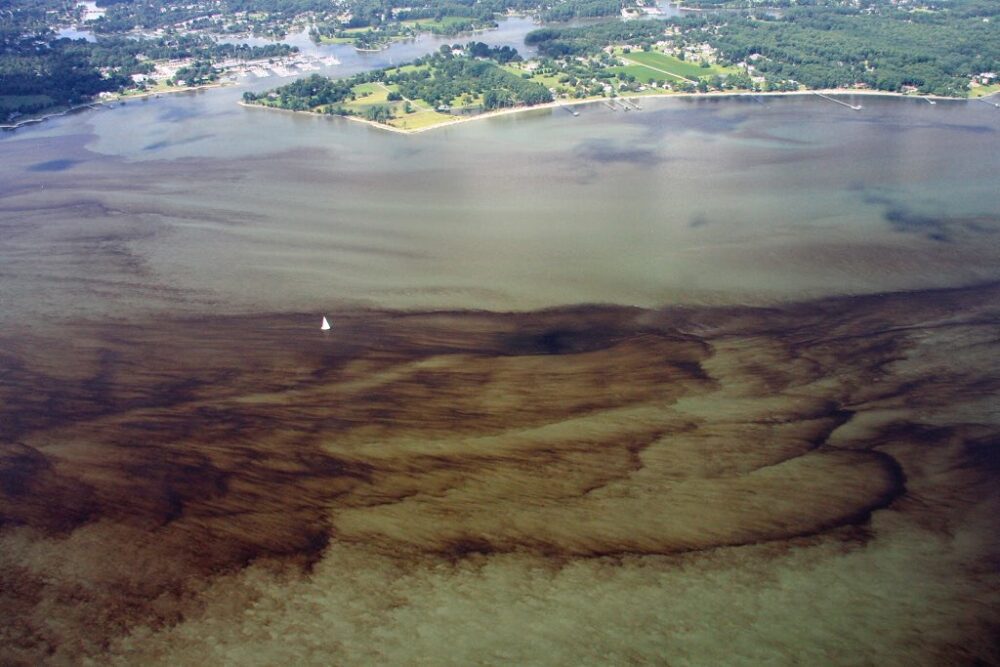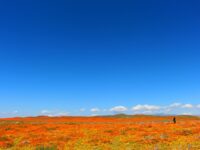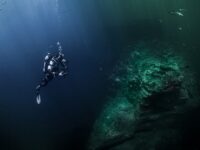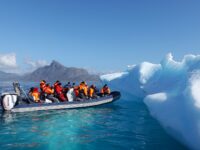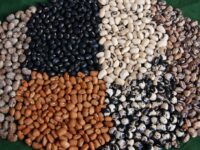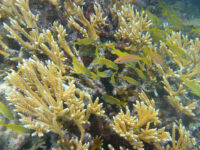It’s no secret that climate change is responsible for a plethora of environmental issues, and according to recent research, a giant and toxic algal bloom off the west coast of the United States can be added to the long list of climate change–induced disasters.
According to a 2020 study published in Frontiers in Climate and conducted by researchers at the Northwest Fisheries Science Center, between 2013 and 2015, the Pacific Ocean underwent a series of extreme heatwaves, which were “five times more likely to occur due to anthropogenic forcing over natural variability alone.” Harmful algal blooms (HABs) grow on the surface waters of warmer climates, so the warming of these coastal waters created a perfect environment for a HAB to thrive. In 2015, these warm waters brought about a massive HAB caused by the diatom Pseudo-nitzschia. HABs have appeared on the west coast in the past along areas like Monterey Bay and Heceta Bank, but unique weather patterns allowed the 2015 HAB to rapidly grow and spread. In addition to the heatwave, ocean storms caused an upwelling of nutrients from the ocean floor, feeding the algae and causing them to bloom at a faster rate than usual. Data on ocean current trends between 2014 and 2016 show that algae from the HAB were carried unusually far north, but there were few currents to bring them back down, causing Pseudo-nitzschia to reside much further north than it typically does. During this time, a specific species of algae known as Pseudo-nitzschia australis began to grow. P. australis had previously been detected off the coast of California but was being found as far north as Washington. What differentiates Pseudo-nitzschia australis from Pseudo-nitzschia? The primary and most concerning difference is that it is even more deadly.
Pseudo-nitzschia and Pseudo-nitzschia australis are harmful to marine life because they produce a toxin known as domoic acid. The algae blooms on the ocean’s surface yet has devastating consequences for life below. Pseudo-nitzschia forms chains that sink deep underwater where the algae is “seeded” into the sand, exposing species of deepwater fish, worms, Dungeness crabs, and razor clams to the toxic domoic acid. When this algae settles in sediment, it has the potential to aid future blooms if upwelling brings them back to the surface. Studies have shown that areas where Pseudo-nitzschia is seeded are more likely to spawn HABs that become increasingly toxic each year because of this phenomenon.
The HAB growth in 2015 saw record cases of disease and death for marine life as the toxins worked their way throughout the food web.
The HAB growth in 2015 saw record cases of disease and death for marine life as the toxins worked their way throughout the food web. Species like seabirds may not have come into direct contact with the algae but were poisoned nonetheless as they consumed prey that had ingested domoic acid. In particular, poisoned shellfish brought about major problems for whale migration and fishermen. HABs delayed the start of the 2015 Dungeness crab harvesting season, resulting in a greater quantity of crab pots in the water during a later period than in previous years. Therefore, whales that were migrating during this time became entangled in the crab pot lines. To prevent these entanglements, state measures were put in place to narrow the timeframe in which crabbers could set out crab pots, harshly limiting the size of their harvests.
If HABs occur annually and have such significant consequences, what can be done to foresee and work around them? Multiple bulletins have been created and posted online to monitor and report information about HABs. These bulletins display data collected from coastal waters as well as statistical models that estimate the impacts of HABs and their toxins. They are very helpful for fishing managers, especially those who fish for shellfish. By monitoring the bulletins, managers can know which areas are safe to fish in and when they should expect HAB growths to appear in prospective harvest areas. When these bulletins predict high levels of domoic acid and toxins in a specific region, managers can carefully monitor their shellfish and the toxicity levels of their catches.
At first glance, the massive 2015 HAB may seem like an isolated phenomenon, but it’s unfortunately only a small reflection of a bigger environmental picture: If the climate crisis is not adequately addressed soon, the problems it causes now will only grow and poison the planet for years to come.
Only time can tell how the HABs will progress in the future, and while environmental scientists are doing what they can to monitor these toxic blooms, there is no way to prevent them from happening entirely. At first glance, the massive 2015 HAB may seem like an isolated phenomenon, but it’s unfortunately only a small reflection of a bigger environmental picture: If the climate crisis is not adequately addressed soon, the problems it causes now will only grow and poison the planet for years to come.
Source: 1
Image Source: Flickr
